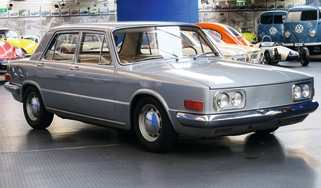Talbot Horizon Lotus – dead on arrival
The Sunbeam Lotus successor was mid-engined and turbocharged, but lacked another vital ingredient

The Talbot Sunbeam Lotus was a mongrel. For starters, it was based upon a stopgap hatchback built on a cut-down Hillman Avenger chassis, hastily confected in just 19 months to give the ill-fated Linwood plant something to make. Even company bosses thought the Sunbeam was an unpromising platform for a rally car and motorsport director Des O’Dell had to use his own money to buy a Lotus engine and fit it to a mule in order to win them over.
Even once it was signed off, no one had great hopes for the little Sunbeam, despite Lotus tweaks to the suspension and shell, and a 2.2-litre version of their twin-cam 900-series engine up front. The way this homologation special was assembled seemed like an unholy mash-up too, with each car emerging from the Scottish factory as an engineless Sunbeam GLS, travelling down to Norfolk so Lotus could fit the engine and gearbox, then shuttling to a Talbot facility in the West Midlands for final checks before being dispatched to a dealership.
> Volkswagen AE 266 – dead on arrival
Yet despite its bitsa origins, and a production line that was technically about 520 miles long, the Talbot Sunbeam Lotus was a giant killer and won the World Rally Championship in 1981.
Trouble was, by the time the fat-arched little hatch clinched the title at the RAC Rally in November ’81 the Sunbeam itself was an obsolete model, killed off with the closure of the Linwood plant in May of that year. And despite its victory, the car’s front-engined, rear-drive layout was looking out of date as the world now focused on the new-for-’82 Group B regulations. Talbot’s rally arm anticipated this, of course, and since 1979 had been looking with interest at the mid-engined Renault 5 Turbo that had the silhouette of a shopping car but the soul of a Stratos.
As they hatched plans for the Sunbeam’s successor they rejected its upcoming replacement, the French-made Samba, and decided to base their next-generation col conqueror on the larger Horizon hatchback, re-engineered to take the Sunbeam Lotus engine mounted longways behind the front seats and driving the rear wheels. As installed in the first prototype it ran the same output as the Sunbeam competition cars, around 250bhp, but Lotus engineers had an ace to play. Like Renault, they’d been early adopters of turbocharging and by fitting a second Horizon prototype with a tweaked-up engine from an Esprit Turbo they had a 300-horsepower rally fighter on their hands.
Unfortunately, even this wouldn’t be enough. When the mid-engined Horizon went testing in 1981 the Audi Quattro had already started to show the potential of four-wheel drive that would lead to its domination of the 1982 season; the rear-drive Talbot looked technically old hat before it had taken part in its first rally. At the newly formed Peugeot Talbot Sport division in Vélizy-Villacoublay near Paris, boss man Jean Todt ruled out further development of the Lotus-powered Horizon and instead commissioned a project codenamed M24 Rally, a brand new mid-engined, four-wheel-drive Group B machine based on a still-secret supermini from Peugeot. We know it better as the 205 T16 and it went on to become the most successful car of the Group B era, racking up 16 rally wins, two drivers’ titles and two manufacturers’ championships before the series was abruptly cancelled in 1986.
The T16’s doomed forebear didn’t die in vain, however, because early development on the mighty 205 took place in Coventry using lessons learnt from the work undertaken on the mid-engined Horizon Lotus.
This story was first featured in evo issue 291.






